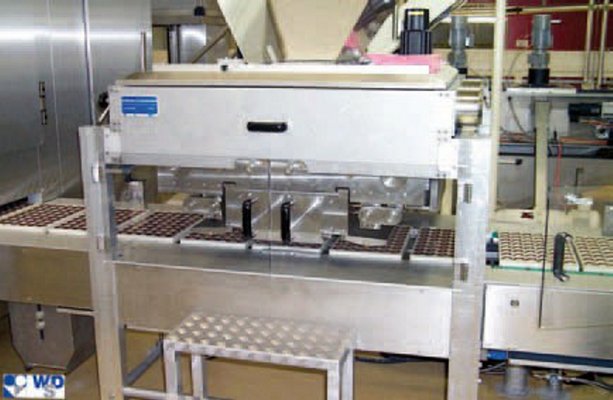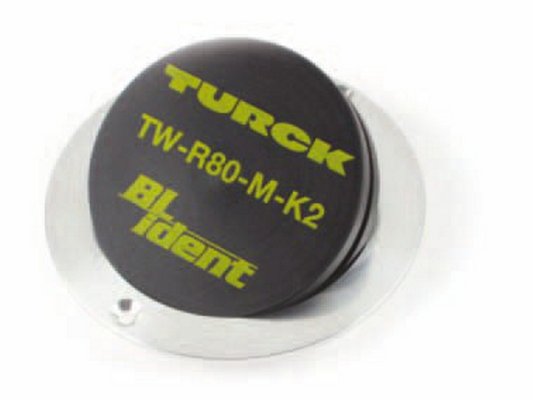While RFID has been used in industrial production in only a number of systems over the last two decades, today, the contact-free identification technology has become more and more of a standard in production technology. The development of different technologies and standards has contributed to this increase considerably. In the beginning, in addition to proprietary solutions (frequencies around 1.5 MHz), only systems with 125 or 250 kHz were used as the open standard. However, users are now spoiled for choice between numerous frequencies. Each has its specific strengths for certain applications.
Different frequency ranges
The single standard frequencies – the only ones for years - in the range of 125 and 250 kHz were most familiar to manufacturers because almost every inductive sensor had been working in this frequency range for decades. The limited selection made it easy for many users to make the “right” choice, even if compromises were necessary in the process. Today, RFID systems function in a range from 125 kHz to 13.56 and 433 MHz - even up to 5.8 GHz in accordance to the most varying standards. This makes selecting RFID much more difficult and requires considerable technical expertise. All of these variations are justified – depending on the respective application. For the right selection, the user or system integrator should take a close look at the application in order to decide which system is the right one. Depending on the frequency, there are different criteria that have to be observed.
First of all, if you take a look at the ratio between the maximum transmission power permitted and the possible disruptive factors, the decision lies in selecting high frequencies in order to avoid possible mutual influence. In this case, we are referring to solutions in the UHF range between 400 and 900 MHz, as well as in the microwave range with 2.45 and 5.8 GHz. Depending on the design, the high frequencies can permit ranges of up
to 100 m.
Long range has limitations
In the case of many applications, however, high frequencies lead to considerable difficulties. Therefore, the higher the frequency, the more energy is absorbed through the polar fluids, such as water (that is precisely why a microwave oven is ideal for heating up). This means its use in the food and beverage production - or better said, anywhere where moisture develops – is considerably limited or even impossible.
Other problems could occur in a metal environment. Here, the waves are reflected and partially bundled so that the originally desired data carrier card reader is shifted physically and fragmented which can lead to incorrect readings due to falsely addressed data carriers. Systems in the HF range (13.56 MHz) are clearly advantageous in this case. They may offer ranges of “only” a maximum of 100 cm, however, they are largely insensitive to moisture. The absorption of field energy through a metallic environment does have an adverse effect on these frequencies, but some designs, including the one by Turck, provide data carriers that are equipped with ferrite foils and can be mounted directly onto the metal. Alternatively, it is sufficient to mount conventional data carriers with sufficient distance to the metal (minimum 20 to 30 mm).
Systems in the 125 kHz range can be used particularly effectively in a metallic environment. Here, there are even a few special designs that can be used to read out and write the data carrier straight through the metal. The disadvantage with these systems, however, is the low fluctuation voltage distance because many emissions in the industrial environment occur in this frequency range. Thus, many inductive sensors work with similar frequencies and with the same outputs, which can lead to the stronger one winning out.
Another disadvantage of the LF systems is the relatively low transmission rate. For fast applications or so-called “on-the-fly” read and write operations, in which the processes are executed in motion, these systems can only be used to a very limited extent. In order to be able to realize extremely short cycle times and high processing speeds, the data carrier must be wrote and read in the shortest time possible. For such applications, systems in the 13.56MHz range are indispensable. Due to the higher frequency, considerably more information can be modulated on the carrier wave so that the volume of the data to be transferred per second increases.
BL ident combines frequencies
The designs show that the selection of an appropriate RFID system is not trivial for certain applications. If different requirements are to be combined, up to now, the user frequently had to be satisfied with compromises. With the current expansion of its BL ident RFID systems, Turck is now offering the option of combining the benefits of HF and the UHF technology into one system. The kicker: An expensive configuration is not necessaryfor parallel operation; it is sufficient, for example, to connect a UHF reading head to an existing HF system. The considerably increased range of up to three meters expands the application spectrum enormously. If BL ident has been primarily used for production control, the large ranges and the ability to detect groups now also permit its efficient use in distribution and logistics, as well as in the entire supply chain management. At the SPS/ IPC/Drives trade show in Nuremberg, Turck introduced the first two UHF read heads, measuring 260 x 260 mm for ranges up to three meters, as well as 80 x 80 mm for ranges up to one meter.
Universal RFID components
The option of being able to use a second frequency, in addition to the 13.56 MHz frequency optimal for industrial production processes, is the result of the continual advancement of the BL ident package in close collaboration with the customer. The RFID system launched in April 2006has been routinely expanded with application-specific modules that provide users with the solution to their identification issues.
For example, in addition to standard data carriers for temperatures up to 120 °C, Turck data carriers are available for up to 210 °C. This means that the data carriers can accompany a skid through the oven during the paint baking phase in automobile production. Additional special solutions are available for use in autoclaves. The screw-in data carriers withstand the combination of heat, moisture and pressure. Among the newest developments are the FRAM data carriers with a memory of 8 kbyte, as well as data carriers that can be mounted on metal.
BL ident provides an extensive selection of standard read-write heads, ranging from a sensor housing to application-specific solutions, like for use in gravity roller conveyors. The Q80 fits precisely in the space between the rollers of an 80 cm wide standard roller conveyor. The Q80 can also handle “group detection,” in other words, it is able to identify numerous data carriers simultaneously.
The BL ident product family is based on the modular I/O systems: BL67, BL compact and BL20C, and consists of connection technology and gateways in addition to data carriers and read-write heads. Thanks to its modular design, the RFID system can be easily integrated into existing Turck I/O solutions. Depending on the expansion phase, two, four, six or eight channels are available. Fieldbus interfaces are available for Profibus DP, DeviceNet, EtherNet/IP, PROFINET I/O and Modbus TCP.
Compact control in gateway
As an expansion to the interface components, Turck is offering programmable gateways. The compact control systems can be programmed in accordance to IEC 61131-3 with CoDeSys and support the growing demand for decentralized automation solutions. The heart of the gateway is a 32-bit RISC processor with 512 kbyte program memory, which processes 1,000 AWL commands in less than a millisecond. As a programming interface, an RS232 interface is also available in addition to the 10/100 Mbit Ethernet.
With its “intelligence,” the gateway relieves the higher-level control system because the RFID communication can be entirely handled directly in the gateway. The functional component necessary for SPS (Proxy Ident Block) is listed on site in the programmable gateway. With the higher-level control system, only the user data has to be replaced.
Download the complete article (PDF, 1 MB).
More information unter:
www.turck.de









![[Translate to English:] BL67, BL compact und BL20
UHF-Technologie
Kompaktsteuerung [Translate to English:] Die Produktfamilie BL ident basiert auf den modularen I/O-Systemen BL67, BL compact und BL20.
Die Vorzüge der HFund der UHF-Technologie in einem System parallel zu nutzen.
Die Kompaktsteuerungen sind nach IEC 61131-3 mit ODESYS programmierbar.](/fileadmin/_processed_/5/2/csm_AG_Turck_RFID01_6b12ae1979.jpg)

